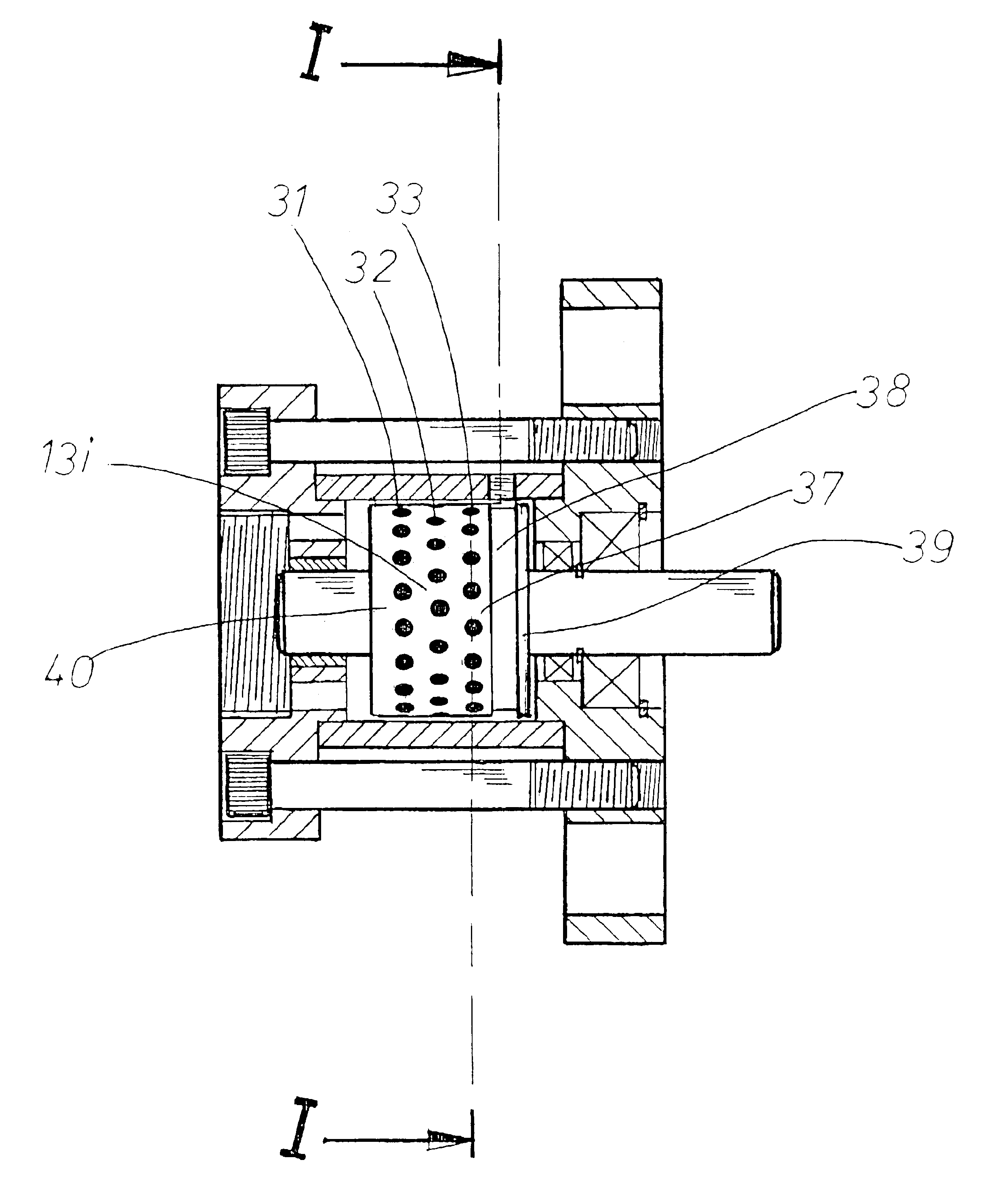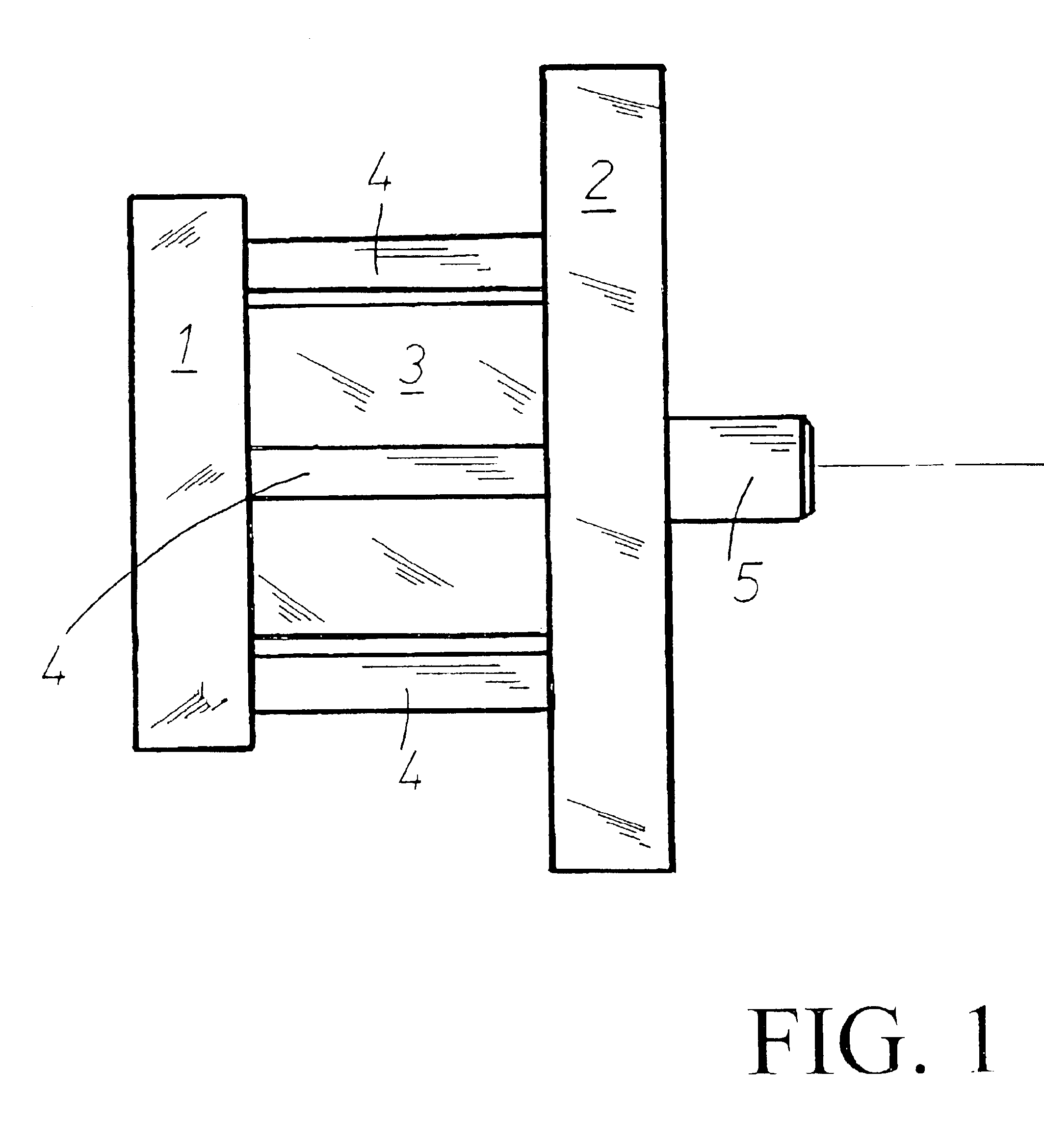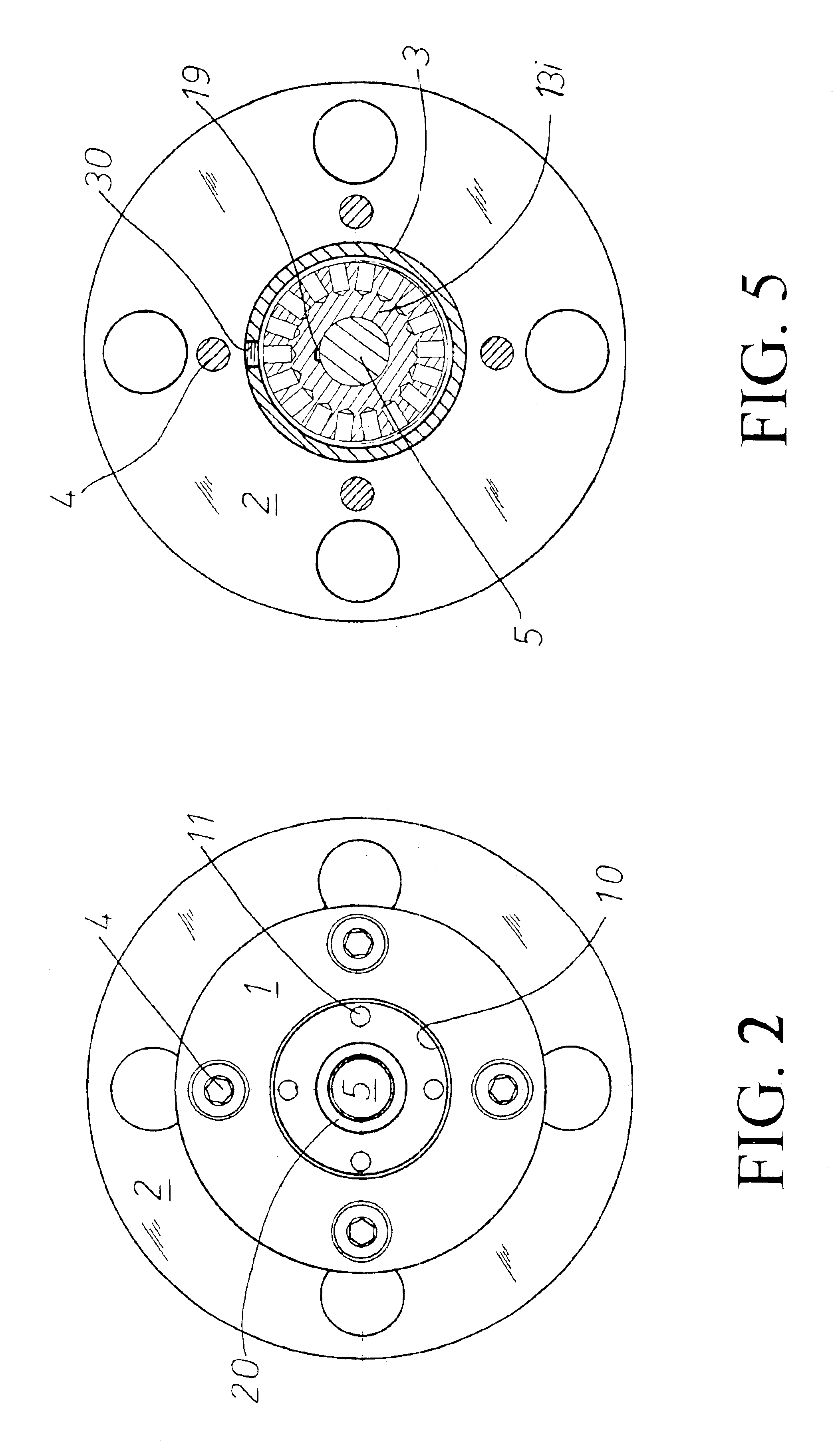Apparatus and method for heating fluids
a technology of fluid heating and apparatus, applied in the direction of fluid friction for heating, heating apparatus, stoves or ranges, etc., can solve the problem that the amount of heat created in this way is likely to be quite small, and achieve the effect of broadening the number of occurrences, achieving the maximum power efficiency in performance, and reducing the risk of accidents
- Summary
- Abstract
- Description
- Claims
- Application Information
AI Technical Summary
Benefits of technology
Problems solved by technology
Method used
Image
Examples
second embodiment
DETAILED DESCRIPTION OF THE INVENTION
[0066]This embodiment of the present invention, depicted in FIG. 21, differs in only two major respects from the previously described first embodiment, firstly, in that the fluid entry connection is now routed through a port in the drive-shaft drive and secondly, the exterior shape of the rotor as well as the opposing interior shape in sleeve housing element are both inclined with respect to the longitudinal axis of the drive shaft.
[0067]Rotor 150 fixed to drive shaft 5i is provided with a conical male exterior surface 151 and sleeve housing member 3i is provided with a complimentary opposing female conical surface 152. As shown, three rows comprising a series of openings or depression zones, here in the formed of drilled holes such as holes denoted by reference numerals 155, 156 are disposed in said rotor 150. Sleeve housing member 3i is provided with a fluid exit connection 30i whereas the entry connection 10i in rear housing member 1i in this ...
third embodiment
DETAILED DESCRIPTION OF THE INVENTION
[0068]This embodiment of the present invention, depicted in FIG. 22, differs in two main respects from the previously described second embodiment. Firstly, the relatively short inclined inlet port at the end of the drive shaft is here replaced by a much longer longitudinal port in the form of a drilled hole which connects with a relatively shorter drilled hole. Secondly, the inlet fluid enters the annular chamber between rotor and housing at the greater diametric dimensioned end of the rotor.
[0069]Here one-piece forged rotor and shaft component, here referred to as the rotating component 175. The rotating component carries a plurality of openings 176 and includes a central longitudinal port 177 and radial port 178. The fluid inlet connection 10ii communicates through ports 177, 178 to axial clearance 170, and fluid entering axial clearance 180 flows past the various openings 176 in its transit through annular volume between rotating component 175...
fourth embodiment
DETAILED DESCRIPTION OF THE INVENTION
[0072]This embodiment of the present invention, depicted in FIG. 23, differs in one main respect from the previously described third embodiment, namely, the rotating component 190 comprising both the rotor and the drive shaft, is in this instance, provided with an outer surface 191 which is tapered in the opposite direction to the inclined surfaces shown in the second and third embodiments.
[0073]Rotating component 190 carries a plurality of openings 193 and includes a central longitudinal port 194 and radial port 195. The fluid inlet connection 10iii communicates through ports 194, 195 to axial clearance 196, and fluid entering axial clearance 196 flows past the various openings 193 in its transit through annular volume between rotating component 190 and housing sleeve 3iii. Once reaching circumferential fluid capturing groove 197, here reverted back to being located on the outer surface 191 of the rotating component 190, the heated fluid is expe...
PUM
 Login to View More
Login to View More Abstract
Description
Claims
Application Information
 Login to View More
Login to View More - R&D
- Intellectual Property
- Life Sciences
- Materials
- Tech Scout
- Unparalleled Data Quality
- Higher Quality Content
- 60% Fewer Hallucinations
Browse by: Latest US Patents, China's latest patents, Technical Efficacy Thesaurus, Application Domain, Technology Topic, Popular Technical Reports.
© 2025 PatSnap. All rights reserved.Legal|Privacy policy|Modern Slavery Act Transparency Statement|Sitemap|About US| Contact US: help@patsnap.com



